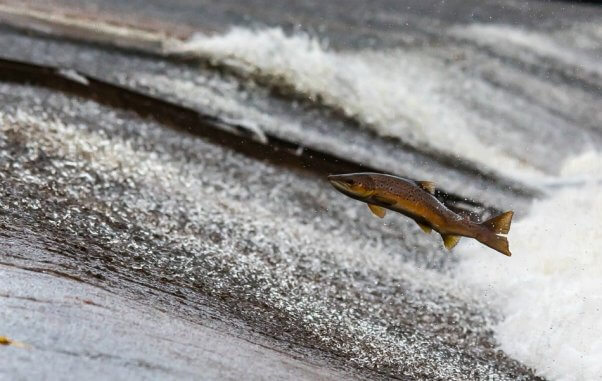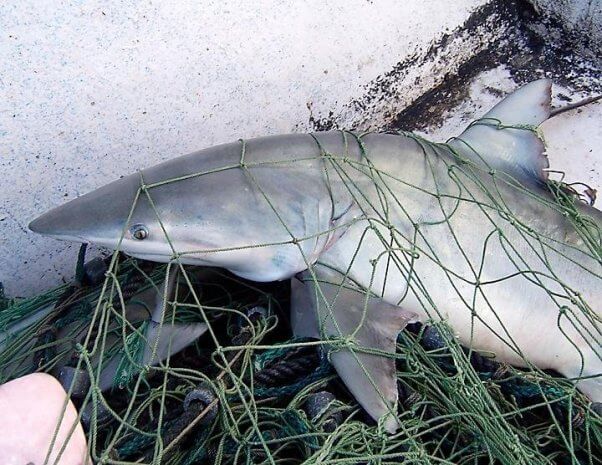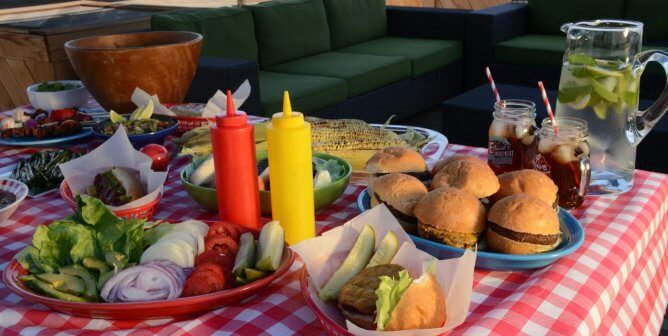Making your own sushi at home can be a fun way to hone your culinary skills. With the rise of vegan seafood products on the market and innovative new recipes made with plants, there’s no reason why your sushi should harm animals, your health, or the environment. Fish simply want to be left to live in peace among their families and in their habitats—they don’t want to be killed for your dinner.
Here are some of our favorite swaps to make the most satisfying fish-friendly vegan sushi at home:
❌ Tuna
✔ Tomato Tuna
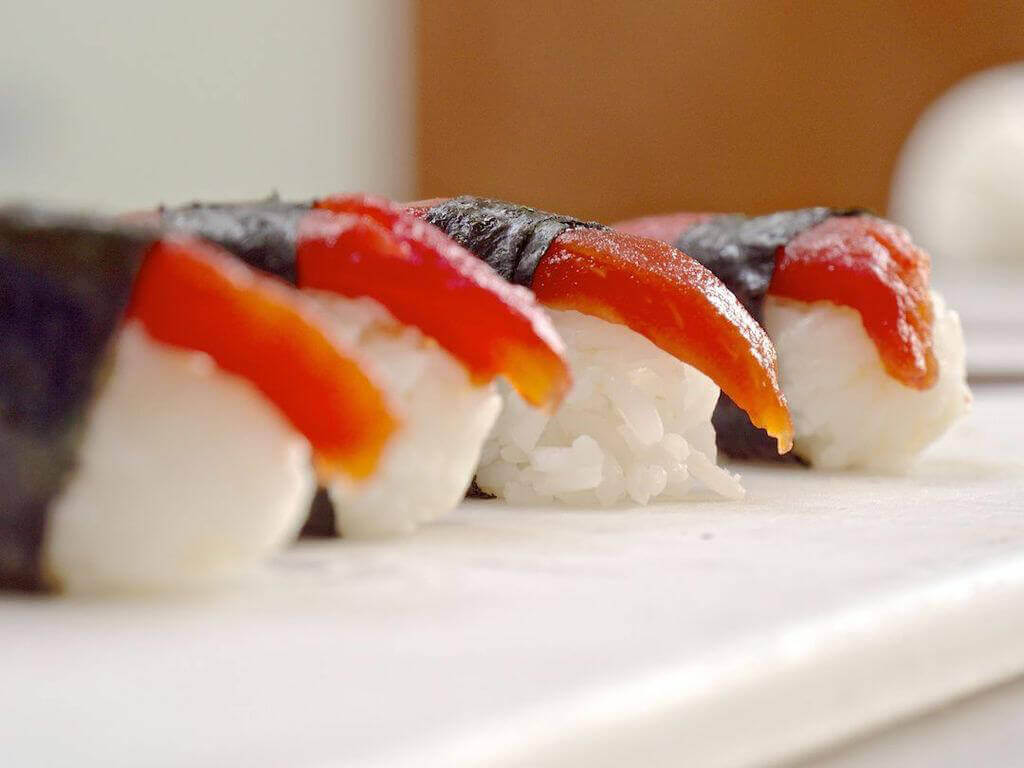
❌ Crab
✔ Jackfruit
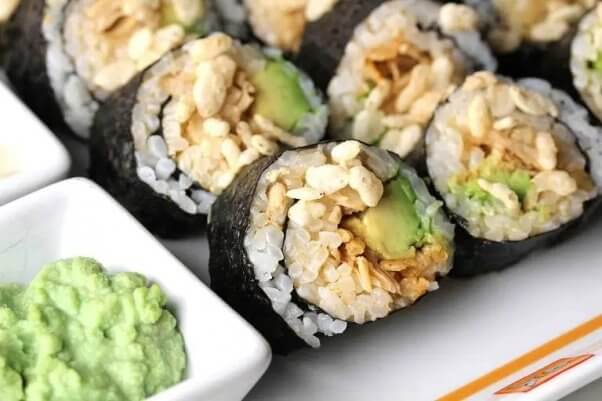
❌ Shrimp
✔ May Wah Vegan Red Spot Prawns
❌ Tobiko (fish eggs)
✔ Cavi-art
❌ Salmon
✔ Vegan Carrot Salmon
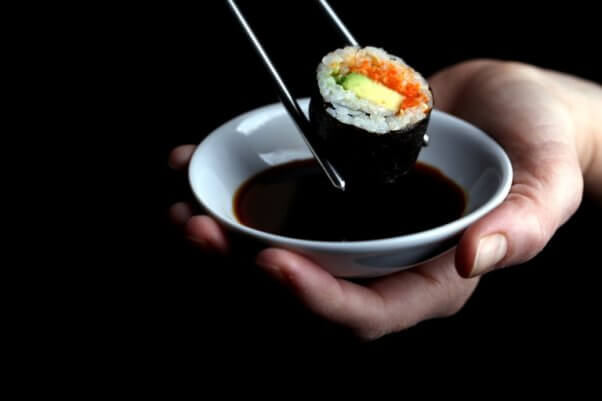
❌ Unagi (eel)
✔ Sweet Potato Unagi
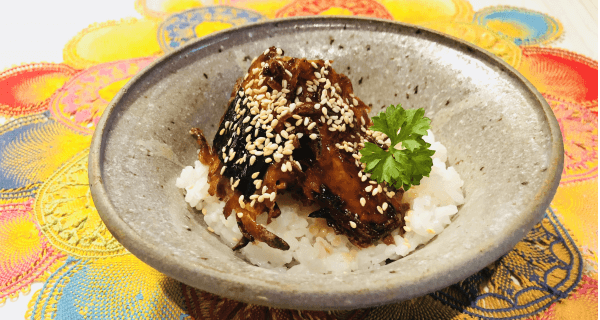
Read on to learn more about the cruelty and carelessness of eating fish.
Misled and Mislabeled
Are you being duped by the fishing industry? Seafood fraud along the entire supply chain is more common than you may think. A study conducted by Oceana tested 82 samples of salmon that were labeled “wild caught” and found that nearly half of them were actually from farmed fish. The study also discovered a second common deception practice: Species of salmon are mislabeled in order to fool customers into thinking they’re buying a more expensive one.
Another study, conducted by University of California–Los Angeles researchers, found that 70 percent of the sushi served in a sampling of local restaurants and high-end grocery stores over a five-year period were mislabeled. Halibut, red snapper, yellowfin tuna, and yellowtail were the most commonly mislabeled (around 77 percent), followed by salmon and mackerel.
Any “organic” label on fish cannot be trusted, because, as of the time of writing, the U.S. Department of Agriculture doesn’t certify organic aquaculture products.
In addition, 92 to 95 percent of the seafood that humans consume in the U.S. is imported, which means that fraud is rampant and difficult to trace. This includes practices such as “transshipping” (when seafood is exported through specific countries to avoid tariffs and duties), “at-sea transfers” (when illegal vessels give fish to cargo vessels that are carrying legal fish), and falsifying trade documents. The country of the fish’s origin can be changed to avoid fees and regulations and in order to sneak in illegally caught fish.
Fish and Your Health
Think fish is a healthy food? Think again. A survey conducted by researchers with Rutgers University found that people who eat sushi weekly are in danger of mercury poisoning, a potentially life-threatening condition. The Environmental Protection Agency and the U.S. Food and Drug Administration both advise women of childbearing age and children to refrain from eating certain species of fish, including king mackerel, and to consume fewer than 12 ounces of other fish flesh a week, because of the dangerous mercury levels it contains. Of course, the best way to avoid the dangers of mercury is not to eat fish at all.
Annually, around 63 percent of tuna fished around the world is caught using the purse seine method, which is essentially a wall of netting that encompasses a large area. Bycatch rates for this method can reach up to 8.9 percent. (Bycatch is the term for nontarget animals—often threatened species—who are accidentally caught and killed in the net.) According to Jonathan Safran Foer’s book Eating Animals, animals from 145 different species—in addition to tuna—are regularly killed in the process of tuna fishing. This includes hammerhead sharks, common seahorses, pufferfish, orcas, and green turtles, to name just a few.
Think it’s time to go vegan? Take our vegan pledge today, and order your free vegan starter kit:



